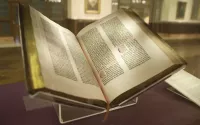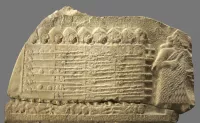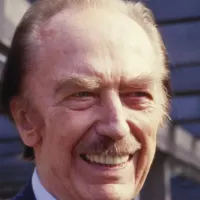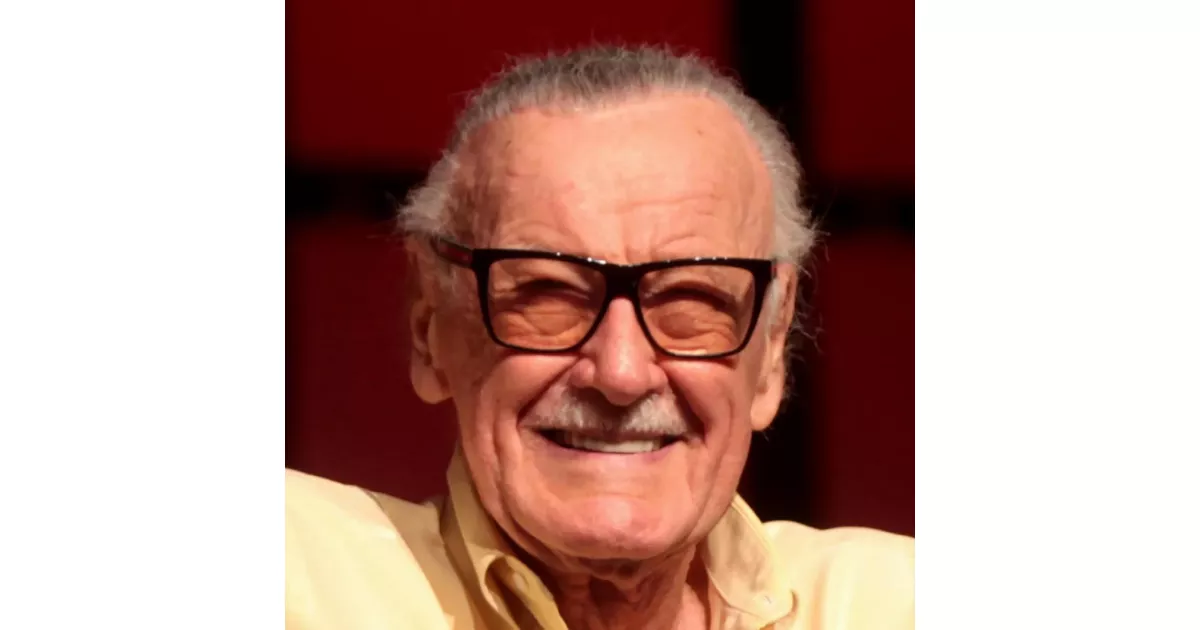Discover the career path of Stan Lee, from the first major opportunity to industry-changing achievements.
Stan Lee was a pivotal figure in the comic book industry, primarily known for his work at Marvel Comics. He transformed Marvel from a small publishing division into a multimedia powerhouse over two decades. As a writer, editor, publisher, and producer, Lee co-created iconic characters such as Spider-Man, the X-Men, Iron Man, Thor, the Hulk, and the Fantastic Four, revolutionizing the superhero genre with more complex and relatable characters. His contributions significantly shaped the landscape of pop culture and the entertainment industry.
1939: Assistant at Timely Comics
In 1939, Stan Lee became an assistant at Timely Comics, a division of Martin Goodman's pulp magazine and comic-book publishing company, with the help of his uncle Robbie Solomon.
1939: Early Graduation and Joining WPA Federal Theatre Project
In 1939, Stan Lee graduated from DeWitt Clinton High School early at sixteen and a half and joined the WPA Federal Theatre Project.
May 1941: Comic Book Debut with Captain America
In May 1941, Stanley Lieber made his comic-book debut with the text filler "Captain America Foils the Traitor's Revenge" in Captain America Comics #3, using the pseudonym Stan Lee.
August 1941: First Superhero Co-Creation: The Destroyer
In August 1941, Stan Lee's first superhero co-creation, the Destroyer, debuted in Mystic Comics #6. Other characters co-created during this time include Jack Frost and Father Time.
1941: Interim Editor at Timely Comics
In 1941, after Joe Simon and Jack Kirby left Timely Comics, Stan Lee, at just under 19 years old, was appointed as interim editor.
September 1943: Appearance in Terry-Toons #12
In September 1943, Stan Lee made an appearance in one panel of Terry-Toons #12 as the "third assistant office boy". This was one of Stan Lee's earliest appearances in a comic book.
June 1947: Featured in Margie #36
In June 1947, Stan Lee was prominently featured as a story character in Margie #36. This marked a notable early instance of Lee being depicted within a comic book narrative.
March 1950: Appearance on Black Rider #8 Cover
In March 1950, Stan Lee appeared in a mask on the cover of Black Rider #8, though it was as a character model rather than as himself.
1956: DC Comics' Superhero Revival
In 1956, DC Comics editor Julius Schwartz revived the superhero archetype with an updated version of the Flash, leading to publisher Martin Goodman assigning Stan Lee to create a new superhero team.
1960: Creation of a New Superhero Team Assigned
In 1960, Martin Goodman assigned Stan Lee to come up with a new superhero team in response to the success of DC Comics' Justice League of America. Lee's wife suggested he experiment with stories he preferred.
1961: Creation of the Fantastic Four
In 1961, Stan Lee and Jack Kirby created the Fantastic Four, marking the beginning of a wave of new superhero titles from Marvel. They later co-created the Hulk, Thor, Iron Man, and the X-Men.
January 1963: Appearance in The Fantastic Four #10
In January 1963, Stan Lee and Jack Kirby appeared as themselves in The Fantastic Four #10, marking the first of several appearances within the Marvel Universe. They were portrayed as creating comic books based on the "real" adventures of the Fantastic Four.
1965: Messages to Merry Marvel Marching Society
In 1965, Stan Lee recorded messages to the newly formed Merry Marvel Marching Society fan club, fostering a sense of community with readers.
March 1966: Beginning of the Galactus Trilogy
In March 1966, the "Galactus Trilogy" began in Fantastic Four #48, which is frequently cited as Stan Lee and Jack Kirby's finest achievement, chronicling the arrival of Galactus and the Silver Surfer.
1966: Collaboration with John Romita Sr.
Following Steve Ditko's departure in 1966, Stan Lee began collaborating with John Romita Sr. on The Amazing Spider-Man.
August 1967: Introduction of Robbie Robertson
In August 1967, Robbie Robertson was introduced in The Amazing Spider-Man #51 as one of the first African-American characters in comics to play a significant supporting role.
1967: "Will Success Spoil Spiderman" Radio Program
By 1967, Marvel was well-established in popular culture, leading to a March 3 WBAI radio program featuring Stan Lee and Jack Kirby titled "Will Success Spoil Spiderman [sic]".
August 1968: Launch of The Silver Surfer Series
In August 1968, Stan Lee and artist John Buscema launched The Silver Surfer series, expanding on the story and character from the Galactus Trilogy.
1968: Parody as Stan Bragg
From 1968 to 1969, Stan Lee was parodied as Stan Bragg, editor of Brain-Pix Comics, in the first series of Angel and the Ape.
September 1969: Creation of The Falcon
In September 1969, Stan Lee and Gene Colan created the Falcon, who became comics' first African-American superhero, in Captain America #117.
1969: Parody as Stan Bragg
From 1968 to 1969, Stan Lee was parodied as Stan Bragg, editor of Brain-Pix Comics, in the first series of Angel and the Ape.
July 1972: Appearance in Sgt. Fury and his Howling Commandos #100
In July 1972, Stan Lee made a cameo appearance hosting an old-soldiers reunion in Sgt. Fury and his Howling Commandos #100.
July 1972: Final Issue of The Amazing Spider-Man
In July 1972, Stan Lee's final issue of The Amazing Spider-Man, #110, was published as he transitioned to the role of publisher at Marvel Comics.
August 1972: Final Fantastic Four issue
In August 1972, Stan Lee's last Fantastic Four issue, #125, was published as he transitioned to the role of publisher at Marvel Comics.
1972: Performance at Carnegie Hall
In 1972, Stan Lee presented a poem at Carnegie Hall, which was later used as text for his digital graphic novel Stan Lee's God Woke.
1972: Succeeding Goodman as Publisher
In 1972, Stan Lee succeeded Martin Goodman as the publisher of the comic-book division.
1976: Illustration of Costello's Wall
In 1976, Stan Lee was one of the cartoonists who illustrated the Costello's wall. He drew Spider-Man.
January 3, 1977: Launch of Spider-Man Newspaper Comic Strip
On January 3, 1977, Stan Lee and John Romita Sr. launched the Spider-Man newspaper comic strip.
June 1977: Appearance in The Amazing Spider-Man #169
In June 1977, Stan Lee made a cameo appearance as a bar patron in The Amazing Spider-Man #169.
October 1978: Portrayal as Mister Fantastic in What If #11
In October 1978, Jack Kirby portrayed himself, Stan Lee, Sol Brodsky, and Flo Steinberg as superheroes in What If #11, "What If the Marvel Bullpen Had Become the Fantastic Four?", with Lee playing the role of Mister Fantastic.
1978: Publication of The Silver Surfer: The Ultimate Cosmic Experience
In 1978, Stan Lee's final collaboration with Jack Kirby, The Silver Surfer: The Ultimate Cosmic Experience, was published as part of the Marvel Fireside Books series and is considered to be Marvel's first graphic novel.
February 1980: First Issue of The Savage She-Hulk
In February 1980, Stan Lee and John Buscema produced the first issue of The Savage She-Hulk, introducing the female cousin of the Hulk.
1981: Move to California
In 1981, Stan Lee moved to California to develop Marvel's TV and movie properties, becoming an executive producer and making cameo appearances in various Marvel adaptations and other films.
1982: Silver Surfer One-Shot
In 1982, Stan Lee returned to comic book writing with various Silver Surfer projects including a one-shot drawn by John Byrne.
1989: Conversation with Lee
In 1989, Joe Simon related a conversation with Stan Lee in an appendix to his autobiography, reconciling two different accounts of Lee's early career. The event occurred in 1989.
1990: Publication of Joe Simon's Autobiography
In 1990, Joe Simon's autobiography, The Comic Book Makers, was published, offering a different account of Stan Lee's introduction to the comics industry, describing him as a relative brought in by "Uncle Robbie" to be kept busy.
1994: Appearance in Marvels #3
In 1994, Stan Lee appeared as a bar patron in Marvels #3, in one of his numerous cameo appearances in Marvel titles.
1994: Induction into the Will Eisner Award Hall of Fame
In 1994, Stan Lee was inducted into the comic book industry's Will Eisner Award Hall of Fame, recognizing his contributions to the field.
1995: Induction into the Jack Kirby Hall of Fame
In 1995, Stan Lee was inducted into the Jack Kirby Hall of Fame, further solidifying his legacy in the comic book industry.
July 1996: Appearance in Generation X #17
In July 1996, Stan Lee appeared in Generation X #17 as a circus ringmaster narrating a story set in an abandoned circus, with lines written by Lee himself.
July 1997: Revival of Circus Ringmaster Characterization
In July 1997, Stan Lee's circus ringmaster characterization was revived in Marvel's "Flashback" series of titles cover-dated July 1997, introducing stories about Marvel characters before they became superheroes.
June 1998: Appearance at Karen Page's Funeral in Daredevil vol. 2, #8
In June 1998, Stan Lee made a cameo appearance at Karen Page's funeral in Daredevil vol. 2, #8.
1998: Start of Stan Lee Media
In 1998, Stan Lee and Peter Paul began a new Internet-based superhero creation, production, and marketing studio, Stan Lee Media.
1998: Stan Lee Founded Stan Lee Entertainment
In 1998, Stan Lee founded Stan Lee Entertainment which later became the subject of legal disputes regarding intellectual property rights after his death. In 1998, Stan Lee aimed to consolidate and manage his creative works through this entity.
1999: Stan Lee Media Goes Public
In 1999, Stan Lee Media went public through a reverse merger structured by investment banker Stan Medley.
2000: Mention in The Amazing Adventures of Kavalier & Clay
In 2000, Stan Lee and other comics creators are mentioned in Michael Chabon's novel, The Amazing Adventures of Kavalier & Clay, which is set in the early comics industry.
2000: Success of X-Men Film
In 2000, the success of 20th Century Fox's X-Men film occurred.
2001: Formation of POW! Entertainment
In 2001, Stan Lee, Gill Champion, and Arthur Lieberman formed POW! (Purveyors of Wonder) Entertainment to develop film, television, and video game properties. Also in 2001, DC Comics released the Just Imagine... series, in which Lee reimagined the DC superheroes Superman, Batman, Wonder Woman, Green Lantern, and the Flash.
2002: Publication of Autobiography: Excelsior! The Amazing Life of Stan Lee
In 2002, Stan Lee's autobiography, Excelsior! The Amazing Life of Stan Lee, was published, providing his personal account of his life and career.
2004: POW! Entertainment Goes Public
In 2004, POW! Entertainment went public through a reverse merger structured by investment banker Stan Medley.
2005: Settlement with Marvel
In 2005, Stan Lee and Marvel settled the lawsuit for an undisclosed seven-figure amount.
June 2006: Officiating Luke Cage and Jessica Jones' Wedding
In June 2006, Stan Lee made a cameo appearance as the priest officiating at Luke Cage and Jessica Jones' wedding in New Avengers Annual #1.
July 2006: Hosting Who Wants to Be a Superhero?
From July 2006, Stan Lee hosted, co-created, executive-produced, and judged the reality television game show competition Who Wants to Be a Superhero? on the Sci-Fi Channel.
2006: Marvel Commemorates Lee's 65 Years
In 2006, Marvel commemorated Stan Lee's 65 years with the company by publishing a series of one-shot comics starring Lee himself meeting and interacting with his co-creations.
2006: Appearance in The Chinatown Death Cloud Peril
In 2006, under the name Stanley Lieber, Stan Lee made a brief appearance in Paul Malmont's novel, The Chinatown Death Cloud Peril.
September 2007: End of Hosting Who Wants to Be a Superhero?
Until September 2007, Stan Lee hosted, co-created, executive-produced, and judged the reality television game show competition Who Wants to Be a Superhero? on the Sci-Fi Channel.
2007: Stan Lee Meets Superheroes
In 2007, Stan Lee Meets Superheroes, written by Lee, was released. In this book, he comes into contact with some of his favorite creations.
2008: Debut of Karakuri Dôji Ultimo
In 2008, POW! Entertainment debuted the manga series Karakuri Dôji Ultimo, a collaboration between Stan Lee and Hiroyuki Takei, Viz Media and Shueisha.
2008: Recipient of the NEA's National Medal of Arts
In 2008, Stan Lee received the National Medal of Arts from the National Endowment for the Arts (NEA), a prestigious honor acknowledging his impact on American art and culture.
2008: Stan Lee Presents Election Daze: What Are They Really Saying?
In 2008, Stan Lee wrote humorous captions for the political fumetti book Stan Lee Presents Election Daze: What Are They Really Saying?
2009: Recalling Early Duties at Timely Comics
In 2009, Stan Lee recalled his early duties at Timely Comics, which included filling inkwells, getting lunch for the artists, proofreading, and erasing pencils from finished pages.
2010: Founding of The Stan Lee Foundation
In 2010, The Stan Lee Foundation was founded to focus on literacy, education, and the arts.
2010: Release of With Great Power: The Stan Lee Story
In 2010, the documentary With Great Power: The Stan Lee Story was released, exploring Stan Lee's life, career, and creations, featuring his colleagues and family.
October 2011: Partnership with 1821 Comics
In October 2011, Stan Lee announced he would partner with 1821 Comics on a multimedia imprint, Stan Lee's Kids Universe, addressing the lack of comic books targeted at children, and he was collaborating on the futuristic graphic novel Romeo & Juliet: The War.
2011: Creation of The Yin and Yang Battle of Tao
In 2011, Stan Lee started writing a live-action musical, The Yin and Yang Battle of Tao, and created the limited series Blood Red Dragon, a collaboration with Todd McFarlane and Japanese rock star Yoshiki.
2011: Donation to the American Heritage Center
Until 2011, Stan Lee regularly donated papers, photographs, recordings and personal effects covering the period from 1926 to 2011, to the American Heritage Center at the University of Wyoming.
2012: Launch of Stan Lee's World of Heroes YouTube Channel
At the 2012 San Diego Comic-Con, Stan Lee announced his YouTube channel, Stan Lee's World of Heroes, which airs programs created by Lee, Mark Hamill, Peter David, Adrianne Curry and Bonnie Burton, among others.
2013: Appearance in The Violent Century
In 2013, Stan Lee appeared in Lavie Tidhar's novel The Violent Century as Stanley Martin Lieber, a historian of superhumans.
2013: Production of Stan Lee's Annihilator Film
In 2013, the film Stan Lee's Annihilator, based on a Chinese prisoner-turned-superhero named Ming, entered production.
2014: Adaptation of Captain America Story
In 2014, Stan Lee and Bruce Timm adapted the 'Captain America Foils the Traitor's Revenge' story into a sequential art story in Marvel's 75th Anniversary Celebration.
January 2015: Release of Zodiac Book
In January 2015, Stan Lee's book Zodiac, co-written with Stuart Moore, was released.
2016: Introduction of Stan Lee's God Woke
At the 2016 Comic-Con International, Stan Lee introduced his digital graphic novel Stan Lee's God Woke, with text originally written as a poem he presented at Carnegie Hall in 1972.
2017: Retirement from Convention Appearances
By 2017, Stan Lee had retired from making convention appearances, marking the end of a significant aspect of his public life and interaction with fans. Stan Lee retired from convention appearances by 2017.
July 2018: Lawsuit Dropped
In July 2018, Stan Lee's lawsuit against POW! was dropped, with Lee stating he was happy to be working with POW! again.
2018: Cameo in Teen Titans Go! To the Movies
In 2018, Stan Lee voiced a cameo appearance as himself in the DC Comics movie Teen Titans Go! To the Movies, marking an appearance outside of Marvel film and television projects.
2019: Final Appearance in Avengers: Endgame
In 2019, Avengers: Endgame marked Stan Lee's final cameo appearance in the Marvel Cinematic Universe, released several months after his death. Following his death, Marvel Studios enacted a policy forbidding cameos by Lee in new films using archive footage.
June 16, 2023: Release of Stan Lee Documentary on Disney+
On June 16, 2023, a special titled Stan Lee, chronicling the life and legacy of Lee, was released on Disney+. It was directed by David Gelb and first premiered at the Tribeca Festival.
Mentioned in this timeline
Marvel Comics founded in as Timely Comics by Martin Goodman...
California is a U S state on the Pacific Coast...

Sony is a Japanese multinational conglomerate based in Tokyo Its...

Ringo Starr born Richard Starkey is a celebrated English musician...

Books are a means of storing information as text or...

War is defined as an armed conflict involving the organized...
Trending
Shaedon Sharpe is a Canadian professional basketball player currently playing for the Portland Trail Blazers in the NBA He was...

3 months ago Rockets face challenges with VanVleet's injury, consider trade targets for replacement.

2 months ago Deni Avdija wins in Utah, builds something special in Portland, breaks out for Blazers.
24 days ago HBO Max Offers Huge Black Friday Discount: One Year for Just $36!
7 months ago HBO's 'Mountainhead' skewers tech elite in a satisfying end-of-world satire.

2 months ago Carmelo Anthony's NBA on NBC Debut Outfit Sparks Controversy and Fan Jokes
Popular

Candace Owens is an American conservative political commentator and author...

Tucker Carlson is an American conservative political commentator known for...

XXXTentacion born Jahseh Dwayne Ricardo Onfroy was a controversial yet...

Ilhan Omar is an American politician currently serving as the...

Kashyap Pramod Patel is an American lawyer who became the...

Frederick Christ Trump Sr - was an American real estate...






